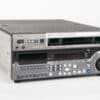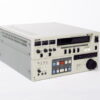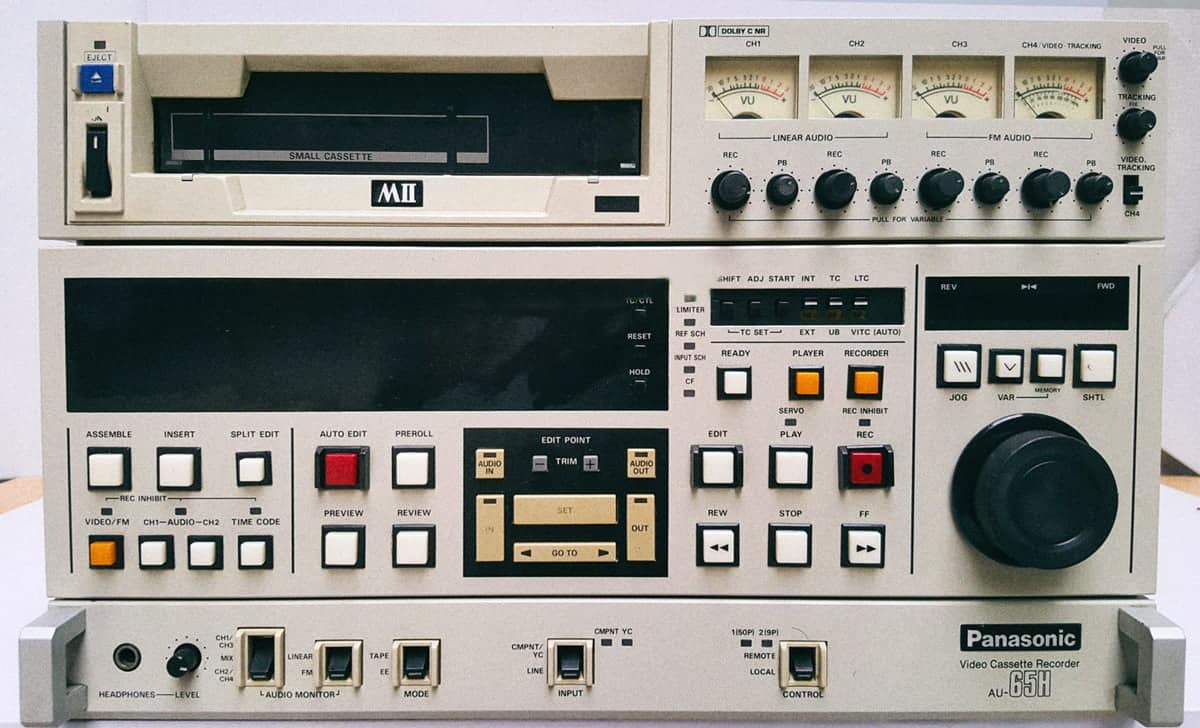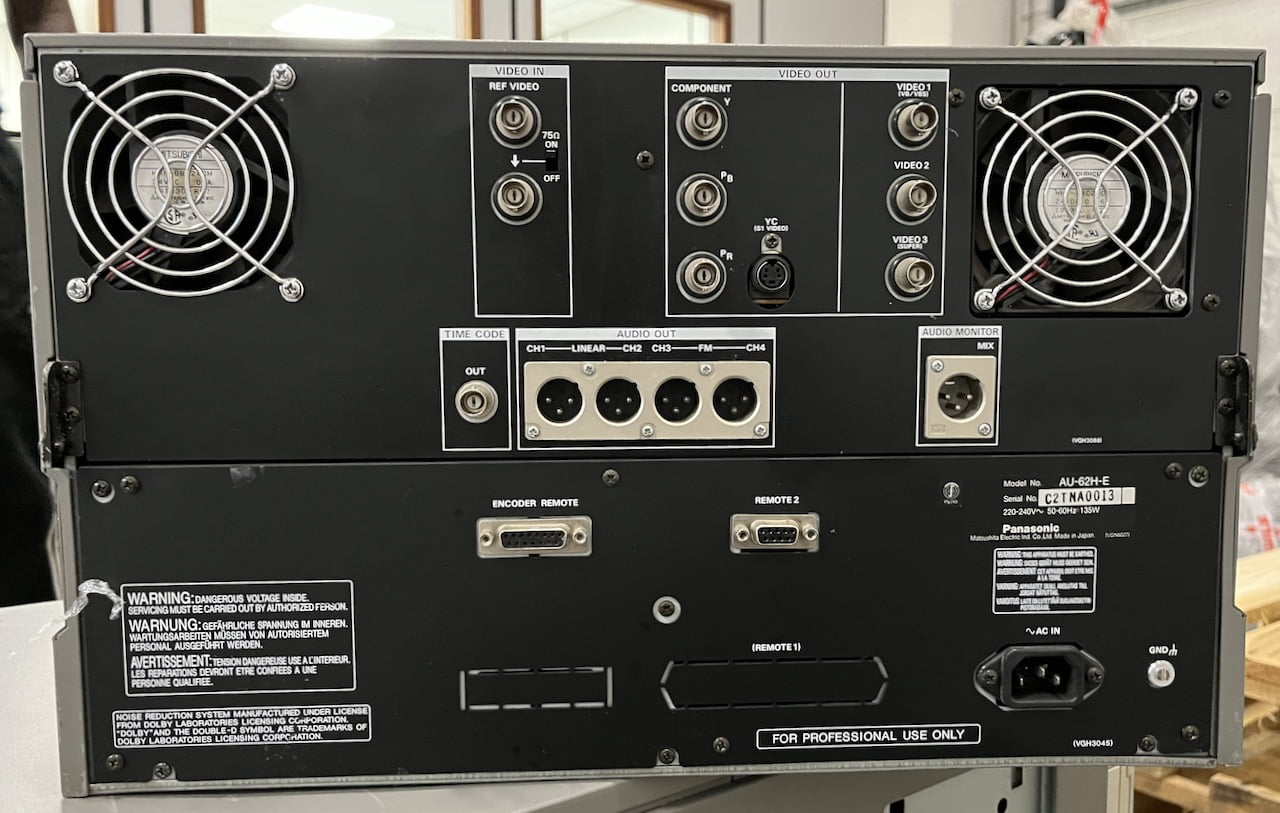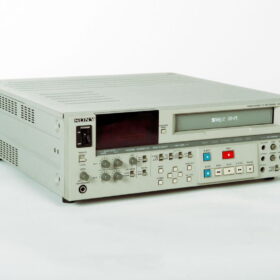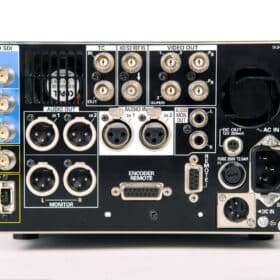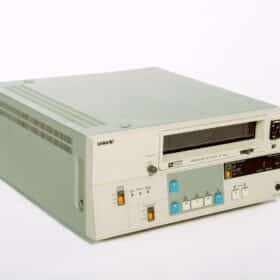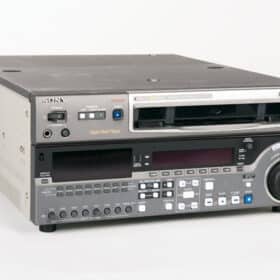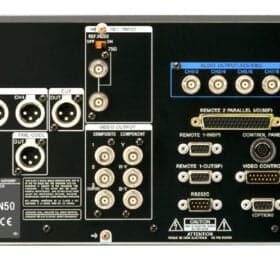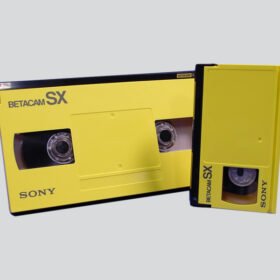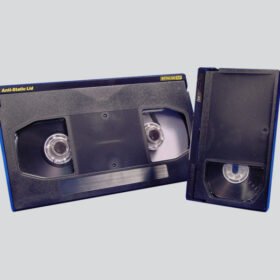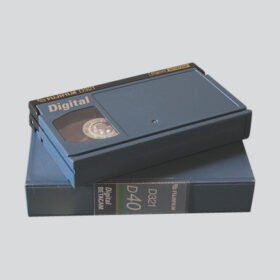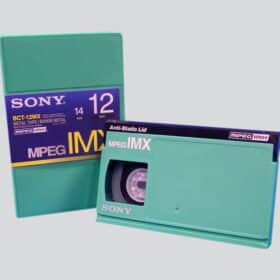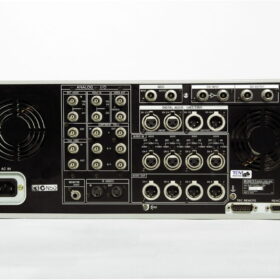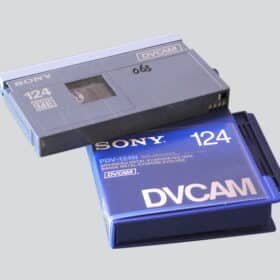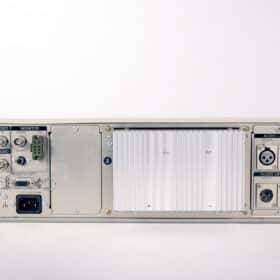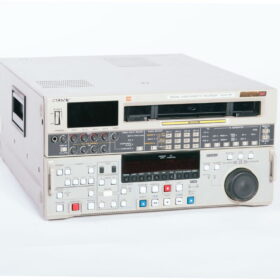We have several models of fully refurbished MII recorders in stock:
JVC branded KR-M545E, KR-M800E & KR-M860E and Panasonic AU-W33H & AU-W35H, AU-62H-E and AU-63H-E.
Reproducing and digitising MII tapes is not an easy thing to do. Compared to Betacam MII is fairly problematic format. Read more about it here.
MII: Panasonic’s answer to Betacam SP
MII is a professional analog recording videocassette format developed by Panasonic in 1986 in competition with SONY’s Betacam SP format. It was technically similar to Betacam SP, using metal-formulated tape loaded in the cassette, and utilizing component video recording.
SONY achieved huge success with its Betacam format introduced in 1982, which evolved into Betacam SP (1986), Digital Betacam (1993), Betacam SX (1996), IMX (2001), HDCAM, and HDCAM SR (2003).
Panasonic’s earlier attempt: the Recam (M-format)
Panasonic, however, developed Recam, short for recording camera, also known as the ‘M-format’ due to its M wrap. It used what were essentially high-grade VHS tapes running at six times the VHS speed and was launched in 1982. Marketed also by RCA and Ampex, it was known as ‘Hawkeye’ under RCA branding. It wasn’t successful for several reasons, including marketing and performance issues, and the closure of the RCA broadcast division in 1984. Very few M machines were sold in Europe, but the format was used for a short time in the United States.
Both Betacam and Recam used oxide tape and recorded component signals (rather than composite). M had a similar 4-head recording system to Betacam, but the chrominance signals were recorded as two FM subcarriers of the main chrominance track FM carrier.
Why MII lost the format war
M was replaced by MII in 1986, starting with the AU-600, followed by the AU-650, and AU-750 with PCM audio. MII used a slightly different cassette to VHS and lacked backward compatibility with the M format. The complex mechanism didn’t lend itself well to the thinner metal tape that was squeezed into a VHS-sized shell, but recording time was increased to 90 minutes. MII was slightly more successful than M, being used by TV-AM and Thames TV in the UK (NHK was a major user in Japan), but it never matched the success of Betacam SP. This was due to several reasons, including marketing, lack of manufacturer support, and reliability. Additionally, Betacam SP machines had the advantage of playing back Betacam (oxide) tapes, and existing Betacam machines could be modified to play small-size Betacam SP tapes, making it a win-win for SONY.

